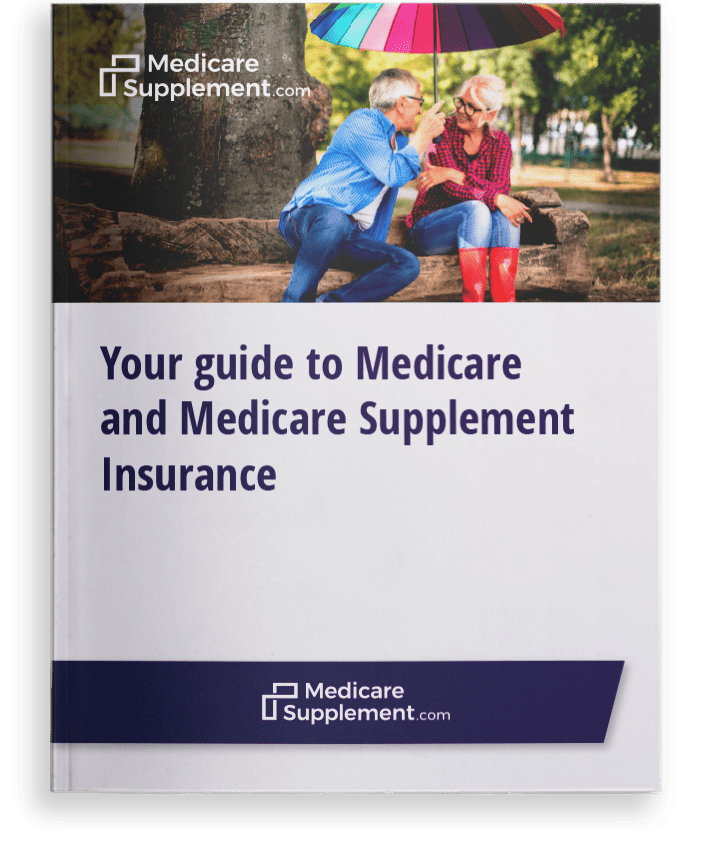Medicare 101
Understanding Medicare Part A Benefit Periods
Medicare Part A benefit period begins the day you go to the hospital or SNF. Learn more about the Part A benefit period in this guide.
Over 66 million people in the United States received Medicare benefits in 2023, making it a popular and essential health insurance option for seniors and younger people with certain disabilities and medical conditions.1
But wouldn’t it be nice if it were easier to understand?
One of the most complicated aspects of the federal health insurance program is the Medicare benefit periods associated with Medicare Part A (Hospital Insurance).
Multiple deductibles in one year? Lifetime reserve days? Differing levels of coinsurance? We’ll help you make sense of how Part A works with some helpful scenarios below.

What is Medicare Part A?
First things first. What is Medicare Part A and what services does it cover?
Medicare Part A provides health insurance coverage for inpatient hospital services, in addition to hospice care and limited coverage for skilled nursing care and certain home health services.
Most people receive Medicare Part A benefits without paying a premium, provided they paid enough payroll taxes while working — a minimum of 10 years, or 40 quarters.
If you don’t have a long enough work history and haven’t paid enough taxes, you can buy Part A coverage for a monthly premium.
When you think about Medicare Part A, think inpatient benefits — services you need while you are admitted to the hospital or another medical facility. This includes things like your room, general nursing care and meals, among other services.
Medicare Part B provides coverage for many of the other health care expenses you’ll encounter — doctor’s services, surgeries, lab tests, and other outpatient procedures.
Medicare Benefit Periods: Multiples
If you’ve had private health insurance in the past, you’re probably accustomed to annual benefit periods. You may have a deductible to meet before coinsurance or copayments kick in.
There may be an out-of-pocket maximum on what you spend over the course of the year. When your plan year ends, everything resets and a new benefit period begins.
Medicare Part A is different. Its benefit periods aren’t annual — they’re based on how long you’ve been discharged from the hospital. You can actually encounter multiple Part A Medicare benefit periods in the same calendar year if you’re hospitalized more than once.
A benefit period under Part A begins the day you’re admitted to the hospital and ends when you’ve been discharged for at least 60 days. If you’ve been out of the hospital for more than 60 days and are admitted again, a new benefit period begins.
Each Medicare benefit period requires that you meet a deductible. It’s $1,632 in 2023, but can change each year. Because hospital care is generally pretty expensive, you should brace yourself to pay that full amount each time you’re in the hospital.
After meeting your deductible, you pay nothing out of pocket for hospital costs for your first 60 days you are admitted. For stays beyond that, you can expect to pay coinsurance.
- If you’re in the hospital between 61 and 90 days during one benefit period in 2023, each day will cost $408.
- If you’re in the hospital for more than 90 days during one benefit period in 2023, each day beyond that will cost $816.
- Starting on Day 91, you start tapping into your lifetime reserve days for Medicare Part A. You have 60 reserve days. Once they are used up and you encounter a long hospitalization, you are responsible for all costs starting with Day 91 in the hospital.
It should be unlikely that you’d encounter a lengthy stay that would require coinsurance payments, barring a serious medical episode.
That’s a lot to digest. Let’s look at a couple of scenarios to help demonstrate Part A benefit periods in action.
Marge’s Costs Under Part A

Meet Marge. She’s over 65 and enrolled in Original Medicare. She’s had some health issues recently and has made a few trips to the hospital. Here’s what she paid under Part A.
Scenario #1
Marge contracted influenza on Jan. 1, 2023, and spent three days in the hospital for observation. She was then discharged on Jan. 4 and sent home.
Marge pays:
- $1,632 to meet her Part A deductible
- $0 in coinsurance because she was in the hospital for less than 60 days
Scenario #2
Marge has really bad luck and contracted the flu again on April 1. Because she’s been out of the hospital for more than 60 days, a new benefit period begins.
She develops serious complications from the flu that require an extended hospitalization. She’s hospitalized for 65 days and discharged on June 5.
Marge pays:
- $1,632 to meet a new Part A deductible because a new benefit period began.
- $2,040 in Part A coinsurance because she was in the hospital for five days beyond 60 days ($408 a day for days 61-65)
Scenario #3
After finally getting over her flu complications, Marge runs into more bad luck. She is injured in a car accident and heads back to the hospital on July 10.
She’s only been out of the hospital for 35 days, so she’s still in the same benefit period as Scenario #2. Remember, her first day in the hospital to treat her injuries is technically her 66th day in the hospital for this benefit period.
She’s in the hospital for 10 days and discharged on July 20.
Marge pays:
- $0 for the Part A deductible. She already met her deductible during Scenario #2 and her benefit period didn’t reset because she wasn’t out of the hospital for long enough.
- $4,080 in Part A coinsurance — $408 per day for 10 days. Her first day in the hospital was Day 66 for this benefit period, so she pays coinsurance for each day of care.
Consider Medicare Supplement Insurance
One way to avoid the confusion associated with Part A’s benefit periods is to enroll in a Medicare Supplement Insurance plan.
These private insurance plans help pay for certain out-of-pocket costs associated with Medicare, including the Medicare Part A costs listed above.
There are 10 standardized Medicare Supplement Insurance plans available in most states, and every one of them covers your Part A coinsurance in full (and provides you an extra 365 days of coverage after your lifetime reserve days are used up).
If Marge had a Medicare Supplement Insurance plan, she would have paid $0 in coinsurance for her extended hospital stays.
Every plan but one also provides at least partial coverage for the Medicare Part A deductible. Depending on the plan she chose, Marge could have cut her deductible costs in half or eliminated them completely.
So, if Marge enrolled in Plans B, C, D, F, G, or N, she could have paid $0 out of pocket for her hospital costs. She wouldn’t have had to think about those complicated benefit periods, either.
To learn more about Medicare Supplement Insurance and get quotes for plans in your area, call a licensed insurance agent today.
Compare Medicare Supplement plans in your area.
Find a plan

Get a Free Medicare Guide!
Enter your email address and get a free guide to Medicare and Medicare Supplement Insurance, as well as important Medicare news and tips. We promise to never send you spam – just helpful content!
By clicking "Get your guide" you are agreeing to receive emails from MedicareSupplement.com.

